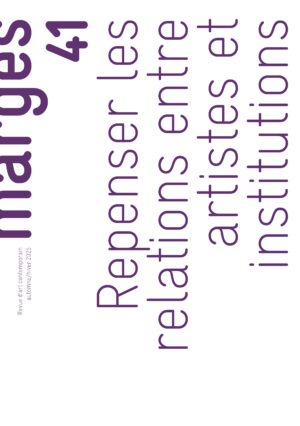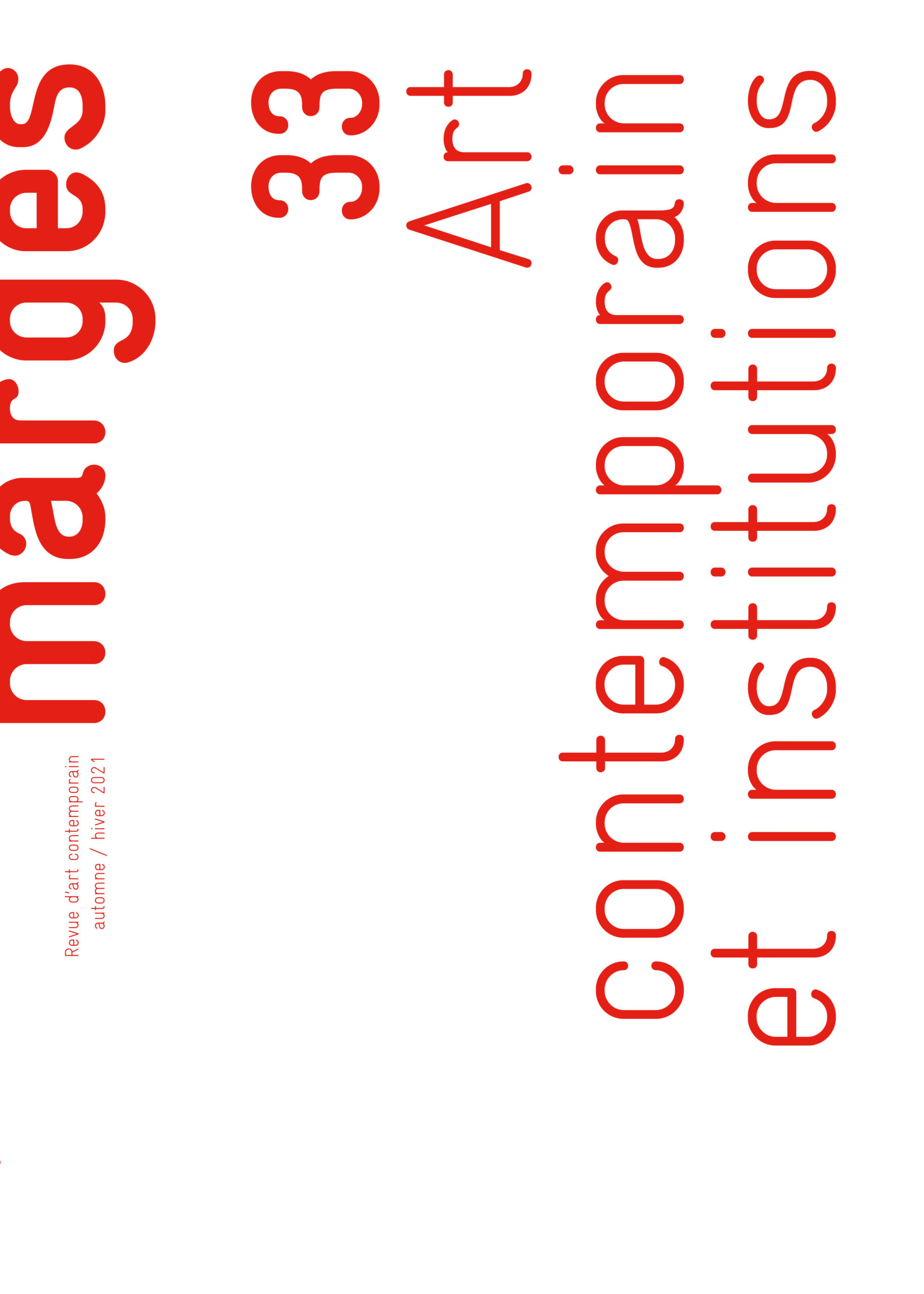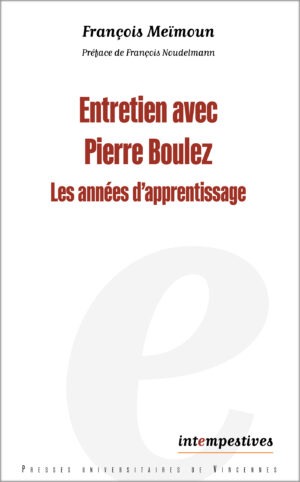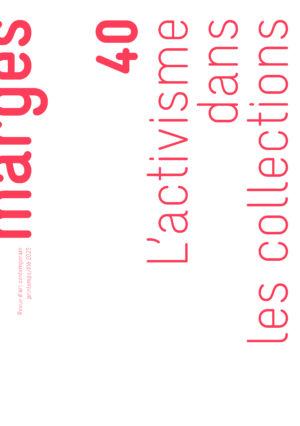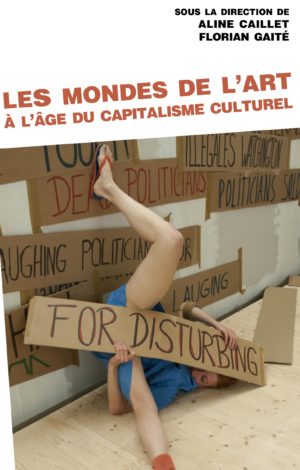How not to modify alterity? Contemporary art and indigenous status
Philippe Le Guern
Observing the reciprocal curiosity that contemporary art and the most current anthropology seem to share, this paper attempts to analyse the reasons, the scope and the stakes of this ethnographic turning point in art and, simultaneously, of the artistic turning point in anthropology. It shows that, in the constitution of this singular dialogical space, questions as essential as those concerning the formation of aesthetic conventions and their socially constructed nature, the social and political scope of the creative gesture, and the relationship between practice and reflexivity are raised. Ultimately, is it not the classic tension between relativism and universalism that is played out in this mutual attraction?
About theorization and anti-theorization in music: system, excess and self-analysis
Frederico Lyra
In this essay we will analyse the theoretical gesture of the composer François Nicolas in the light of the diagnosis made by the musicologist Nicolas Donin about the growing tendency towards anti-theorisation in music. On the one hand, Nicolas proposes a systematic and excessive theory of music. On the other hand, Donin shows that current trends are more towards what he calls self-analysis. We will examine the anachronistic gesture of the one, in the face of the contemporaneity of the other, in a situation of crisis shared differently by the two authors. In the end, we will rely on Theodor W. Adorno’s thought, not in order to propose a synthesis, but rather, following the Adornian critical approach, to try to articulate the tension between these two poles
Institution and sédition: parody at the heart of the Centre d’Art Contemporain of Angoulême
Garance Poupon-Joyeux
The contemporary arts centers emerge in France in the 1970’s and promote themselves as an alternative to the institutions due to their openness to artistic experiments. However, nearly fifty years later, this model seems to be institutionalized as well. This article aims to question this institutionalization by taking the example of the Centre d’Art Contemporain d’Angoulême, an inflatable white cube which parodies, at all levels, these “new” institutions.
Contemporary art at the Bibliothèque nationale de France: collections, goals and visibilities
Isabelle Le Pape
The origins of the Bibliothèque nationale de France, French national Library, can be traced back to the royal library, founded at the Louvre by Charles V in 1368, before the majority of significant museums in the world were opened during the 18th century. The National Library of France is a public institution whose missions include constituting collections, the conservation of these collections, and making them available to the public through mediation, digitization and exhibitions. But does the BnF have the adequate organization in place to do so, compared to other artistic institutions, who seem more appropriate for such purposes?
The artist’s institutional and commemorative gesture. Pedro Cabrita Reis at the Gulbenkian Museum (Lisbonne) and at the Serralves Museum (Porto)
Laura Castro
This paper seeks to analyze and problematize the invitation and the complicity between Pedro Cabrita Reis (Lisbon, 1956), one of the most recognized Portuguese artists of contemporary times, and two Portuguese museums, the Modern Art Center of the Calouste Foundation Gulbenkian, in Lisbon, and the National Museum of Contemporary Art of the Serralves Foundation, in Porto. The invitations, which took place within the framework of the 50th anniversary and the 20th anniversary of the two institutions, reveal the institutional and commemorative uses of contemporary art.
Museum’s creation and contemporary architecture: a sociological point of view
Matteo Stagnoli
The paper draws an analysis of the evolution of the role of contemporary architecture in the creation of artistic institutions in recent years in Europe, through the architectural and sociological reading of three main cases, the Pompidou Center of 1977, the MAXXI of 2010 and the Museum des 20. Jahrhunderts in Berlin. In this frame, the notion of Landmark will be presented as the role that the creation of an institution must play in the urban space.
The Brazilian state in the institutional valorization of Black and Afro-descendant art
Vivian Braga dos Santos
In the 21st century, the Brazilian government participates in actions to promote Black and Afro-descendant art in national institutions, financing the organization of exhibitions and the production of artworks about these themes. In order to do so, the alliance between the public and the private sector is essential. It goes back to the history of art and the tensions of the 20th century between an apparent institutional democratization and the regulation of the black presence in art. Nevertheless, in more recent cultural investments, the State would appear to be collaborating in a social, artistic and political movement to reclaim black identities distinct from past experiences.
The emergence of ecological art in french institutions
Benjamin Arnault
Ecological art has been developing in the United States for several decades. In recent years, the works of the north american pioneers tend to be more exhibited by french institutions. A few collective exhibitions dedicated to ecological art are emerging. This phenomenon raises questions about the relationship between ecological art and french institutions. What is limiting the institutionalization of this art in France ?
From a space of resistance, to the institution’s place: the history of Autograph ABP, between 1988 and 2007
Taous R. Dahmani
The story proposed in this article is that of the necessary, but paradoxical, institutionalization of a photographic and political commitment. Autograph ABP has strived since its creation in the late 1980s to put forward the names of photographers from the Caribbean, African and Indian diasporas in England. Over the years, it was to recognize, legitimize and disseminate the individual practices of so-called Black British photographers. Utopian idea, then political project and finally hybrid institution, Autograph ABP could be seen, successively, as a collective, an association, an agency, an archive, a library, a research center, a publishing house and a place of exhibitions. To tell the story of Autograph ABP is to explain its evolution, that of an activist space that became a cultural institution, after having been an artist-run space.
Towards a “New Unrealism”; A Situationist Exhibition Between Neo-Avant-Garde and Institutional Critique
Tobias Ertl
When in the early 1960s the Nouveaux Réalistes successfully introduced participatory and ludic practices into the art institution, the Situationist International (S.I.)—believing this to be an exploitation of their own revolutionary ideas for the sake of the culture industry and capitalist spectacle—responded by propagating a “new unrealism”. This article examines a 1963 exhibition by the S.I. in Odense, Denmark as a critical reaction to the Nouveaux Réalistes. Situating the exhibition in the conflict-laden history of the group between art and politics, it will be argued that in identifying the aporias of neo-avant-garde attempts to overcome the bourgeois art institution, the S.I. turns to artistic strategies that anticipate the conceptualism of institutional critique.
